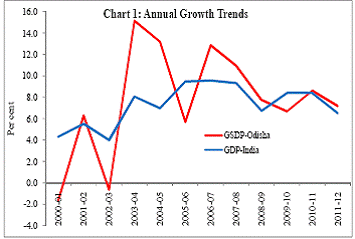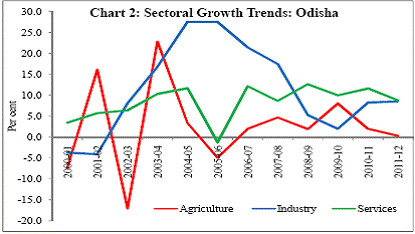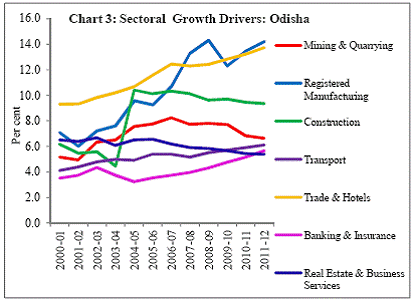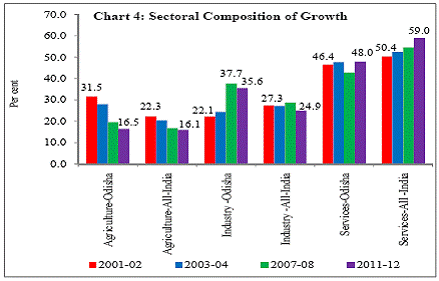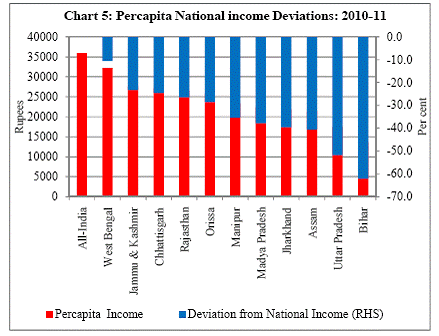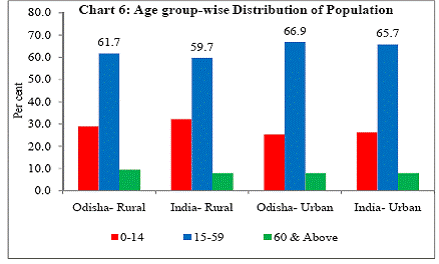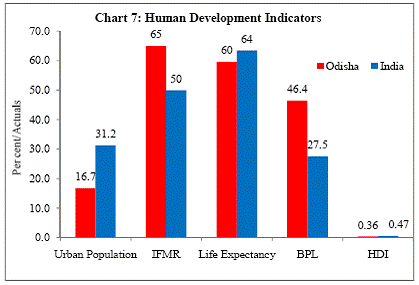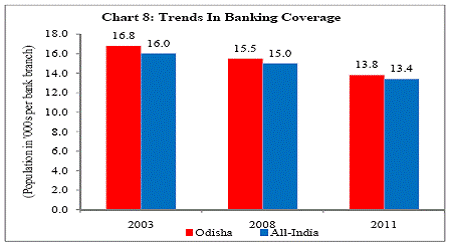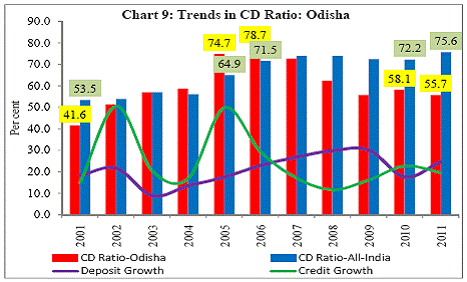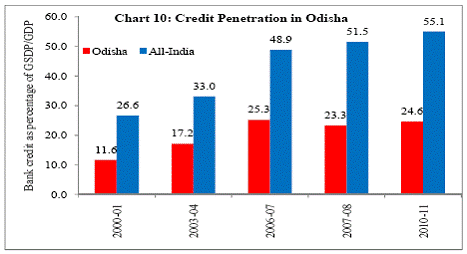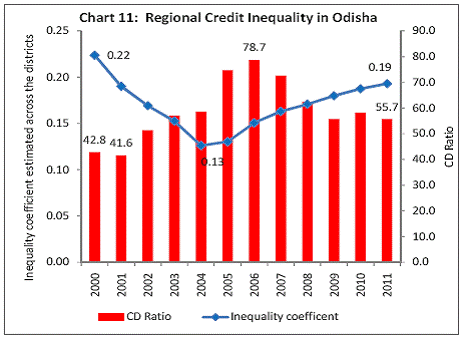 IST,
IST,


Economic and Financial Developments in Odisha
Shri Deepak Mohanty, Executive Director, Reserve Bank of India
Delivered on Aug 20, 2012
I thank Shri Bijoy Ketan Mishra for inviting me to address this distinguished gathering. I am happy that The Political and Business Daily has chosen to highlight the role of banking in Odisha’s development. In the development of the financial sector, banks have a pivotal role. Finance leads growth and economic progress follows. As you know, the Reserve Bank has been actively engaged in the development of the financial sector. However, we have stepped up our efforts in the recent years to enhance the penetration of the formal financial sector and promote financial inclusion with a view to improving the well-being of our society. In my talk today, I propose to briefly outline the economic and financial structure of the State as well as highlight various financial inclusion initiatives taken by the Reserve Bank with a particular reference to Odisha. In conclusion, I shall present some thoughts on policy challenges that lie ahead. Odisha accounting for 4.7 per cent of the total geographical area of the country and 3.5 per cent of the national population has a unique place in the national history and culture. Rather than going back on history, I will trace the economic development starting from the early 2000s mainly because this is a period in which the Indian economy experienced a quantum jump in growth rate. And obviously, growth was happening in various states including Odisha. Economic Structure During the 5-year period 2003-08, All-India GDP growth rate averaged 8.7 per cent per annum. In the subsequent 4-year period 2009-12 though All-India GDP growth rate moderated to 7.6 per cent per annum following the global financial crisis, it can still be considered high. It is noteworthy that coinciding with this high growth phase, the Odisha economy witnessed acceleration in its gross state domestic product (GSDP). In fact, in the earlier period during 2003-08, the average GSDP growth in Odisha at 11.6 per cent per annum far exceeded the national average. Subsequently, growth has moderated in Odisha to an annual average rate of 7.6 per cent, in line with the national level (Chart 1).
In this growth dynamics, three important aspects stand out. First, in the earlier phase of 2003-08 growth was mainly led by industry. Second, in the latter phase of 2009-12 growth was driven by the services sector. Third, in both the phases agricultural growth remained low and volatile (Chart 2).
At a more disaggregated level, the growth acceleration during the decade of 2002-12 was led by registered manufacturing, construction, mining & quarrying and trade & hotels (Chart 3).
The varying growth trends are reflected in the compositional shift among sectors in the GSDP: the share of agriculture declined steadily; the share of industry first rose and then moderated and the share of services first declined and then rose. In this structural transformation of the Odisha economy, which is broadly consistent with the trend in the national economy, the rise in the share of industry is noteworthy (Chart 4).
Significantly, the initial growth spurt in Odisha raised its GSDP share in national GDP from 2.3 per cent in 2002-03 to 2.7 per cent in 2008-09. As growth in GSDP slowed and converged to the national level, the share has since declined but remained steady around 2.6 per cent after 2008-09. However, the most discerning impact can be seen in the rise of real (at 2004-05 prices) per capita NSDP from ` 13,923 in 2002-03 to ` 25,708 in 2010-11. This has helped improve Odisha’s rank in terms of per capita income among the states from the bottom 3rd position in 2002-03 to 7th in 2010-11. Notwithstanding this progress, Odisha’s per capital income is still lower than the national average (Chart 5).
While the economy is transferring towards industry and services, the labour force remains concentrated in agriculture. As against the national average of around 52 per cent of labour share in agriculture & forestry in 2010-11, the State has a much higher labour share of 59 per cent. Furthermore, the share of manufacturing sector in the labour force remains lower compared to the national average despite the recent pick up in manufacturing activity (Table 1). Moreover, labour force participation rate at around 50 per cent in 2010-11 was lower than the labour participation rate of 53 per cent at the national level. Apart from the greater concentration of labour force in agriculture, the demographic structure of Odisha with a higher share of working age population is also favourably disposed towards growth (Chart 6). Hence, the major challenge for the state is to generate employment in industry and services so that labour force can be released from low productivity agriculture activity. This will require improvement in the quality of labour force with higher expenditure in education and health. In this regard, the private sector can play a major role in supplementing the government’s efforts in provision of higher education and health services.
Social Indicators Notwithstanding the rapid economic growth in the recent years, Odisha remains low in human development. With low urbanisation, lower per capita income, high incidence of poverty, high infant mortality and lower life expectancy rate as compared with the national average, Odisha was ranked 22 among the 23 states1 in terms of Human Development Index 2007-08 (Chart 7).
The share of households having access to basic civic amenities such as safe drinking water and electricity remains relatively low compared to the national average, though there has been substantial gains in the decade between 2001 and 2011. Similarly ownership of household assets such as television, telephone and mechanised personal transport remains lower than the national average. The population of households having banking facility, though improving, still remains lower than the national average (Table 2).
State Finances There was substantial improvement in state finances as Odisha achieved the targets set out in the Fiscal Responsibility Legislation (FRL) well ahead of the stipulated time-frame. The revenue account turned surplus in 2005-06 followed by fiscal surplus in 2006-07. Although the fiscal position of Odisha had shown some deterioration in 2008-09 reflecting the combined impact of macroeconomic slowdown and sixth pay commission award, it has since reverted to the path of consolidation. With revenue surplus and moderate fiscal deficit, the need for market borrowings was low. In fact since 2006-07 the State has refrained from market borrowings. This has had a favourable impact on state finances as the outstanding liability of the State dropped from 33.8 per cent of GSDP in March 2008 to 21.1 per cent in March 2012 which is expected to further go down to 19.6 per cent by March 2013. The reduction in liabilities significantly reduced the debt serving cost, thus opening up the space for higher capital outlays and social expenditure. Given the developmental challenge to enhance social and economic infrastructure, it will be desirable for the State to step up mobilisation of its own tax revenues to scale up capital outlays without resorting to borrowings (Table 3).
Banking Developments Let me now turn to development of banking in the State. The formal financial system in India is dominated by banks and same is the case with Odisha. The average population per bank branch in Odisha declined from 16,800 in March 2003 to 13,800 in March 2011 which is somewhat comparable to the national average figure of 13,400 (Chart 8). During this period the number of branches of commercial bank has increased from 2,240 to 3,234.
Apart from the branch network and its population coverage, another major indicator of banking development is the credit-deposit (CD) ratio. In the turn of the last decade in 2001, the CD ratio of Odisha at 42 per cent was way below the national average of 54 per cent. As the State experienced rapid economic growth, the CD ratio not only accelerated but also exceeded the national average and peaked at 79 per cent in 2005-06. Subsequently the CD ratio moderated, particularly after 2007-08 when growth slowed. As at end-March 2011, Odisha’s CD ratio at 56 per cent remained significantly below the national average of 76 per cent (Chart 9).
Another indicator of credit penetration is credit to GSDP ratio. This ratio for Odisha was also relatively low highlighting the scope for further development of Banking in the State (Chart 10).
Not only that the C-D ratio has declined, the inter-regional inequality among districts in credit deployment has also increased in recent years underscoring the need for focused attention to deployment of comparatively less developed districts (Chart 11).
Chattopadhyay (2011) calculated a composite index of financial inclusion which showed that against the national average of 0.33 in 2009-10, Odisha had a lower ratio of 0.20 and had a rank of 16 among 23 states2. The sectoral analysis reveals that though the rural population of Odisha is about 83 per cent of the total population, the credit flow to the agriculture remained low compared to other sectors. Financial Inclusion Against this background, let me now turn to the financial inclusion strategy of the Reserve Bank and what are the specific steps taken for Odisha? It is important to bring the poor and under-privileged sections of the society within the banking fold for inclusive growth. In this context, our recent financial inclusion drive has four key elements. First, provision of a set of basic financial products and services for the vulnerable and financially excluded sections. This includes a savings cum overdraft product in the form of no-frills account, and entrepreneurial credit in the form of Kisan Credit Card (KCC)/General Credit Card (GCC). Second, spread of financial literacy across all sections of the society by creating awareness about financial products and services among the population. Third, greater regulatory incentives through liberalisation of interest rates and branch licensing. Banks have been given complete freedom to price their advances so that lending in the rural areas could be a commercial proposition. Given the lower penetration of formal credit and recourse to money lenders what matters is the availability of credit rather than the cost. Banks have also been given the freedom to open branches in centres with population of less than 1,00,000. Fourth, use of technology and innovative delivery models so that the cost for providing large quantum of small-ticket transactions could be brought down. This initiative included putting in place a system of Business Correspondent (BC) Model to provide door-step delivery of financial products and services by authorized agents of banks; and Electronic Benefit Transfer (EBT) for routing of payments of the central and state government welfare schemes like social security pensions, Mahatma Gandhi National Rural Employment Guarantee Scheme (MNREGS), National Old Age Pension Scheme (NOAPS) directly to the bank accounts of the beneficiaries. In this direction, the effort so far has been to make basic banking facility available to all villages with a population of over 2,000 by end-March 2012. The progress in banking coverage over the last two years has indeed been substantial (Table 2). The next step is to provide banking facilities with population below 2000. State Level Bankers Committees (SLBCs) are preparing roadmaps for banking facilities in these villages in a time bound manner. For meaningful financial inclusion, it is envisaged that banks would set up brick and mortar branches in a cluster of 8–10 BC units in a reasonable distance of 3–4 kilometers.
Financial Inclusion in Odisha Let me now highlight the progress in the Financial Inclusion Plan (FIP) for Odisha. First, the banks in Odisha have made provision for banking facilities in 1,877 unbanked villages having population of more than 2000 by March 2012. Of these, 54 villages are covered through bricks and mortar branches, 7 villages through ultra small branches (USB), 1,740 villages through appointment of BCs and 83 through mobile vans. The banks have proposed to open additional 200 brick and mortar branches by March 2013. In addition 1,502 villages with population between 1,600 and 2,000 have been identified for banking facilities by March 2013. Second, by March 2012, over 6 lakh no-frill accounts were opened and 24 Financial Literacy Counselling Centres (FLCCs) were established. Third, during 2011-12, over 10 lakh Kissan Credit Cards (KCCs) were issued. Moreover, over 8,000 Swarozgar Credit Cards (SCCs) and over 1,000 Artisan Credit Cards (ACCs) were issued. Fourth, during 2011-12 over 58,000 self-help groups (SHGs) were credit-linked. Policy Challenges Let me now turn to broader macroeconomic policy challenges. First, though perceptible structural change in Odisha’s economy is visible, the growth has slackened in the recent years. The Odisha economy needs to regain the growth momentum so that its per capita income not only converges but also exceeds the national average. Second, the overwhelming majority of the population is dependent on agriculture for livelihood. Yet agricultural production has stagnated. Moreover, the agrarian economy remains vulnerable to frequent natural calamities. It is, therefore, necessary to make consorted effort to raise productivity in agriculture which is currently low by national standards by stepping up public investment in agriculture and encouraging better water-management practices. Third, over the medium-term, there is a need to raise the skill levels of rural population through greater public investment in health and education so that they may find remunerative employment and livelihood opportunities outside the agricultural sector. This will encourage greater mechanisation and modern farming practices and thus boost agricultural productivity and production. Fourth, managing the movement of labour force from agricultural sector to industry and services is no less challenging. Given the endowment of mineral reserves, the natural tendency will be for extractive industry to develop. However, exploitation of natural resources should be conducted in a transparent and environmentally sustainable manner with greater emphasis on value addition. Fifth, the rich heritage and strategic location of the State provides ample opportunities for developing both domestic and international tourism. In this regard, upgrading Bhubaneswar airport into an international airport and developing the hospitality sector with the active participation of the private sector could boost the services sector. The connectivity can be further improved by developing a few more airports in the state. Sixth, a few urban centres like Bhubaneswar could be developed into knowledge hubs which will not only cater to the skill requirement of the growing state economy but also will contribute to the national technical manpower pool.This will also promote growth of skill intensive industries like information technology and biotechnology. Seventh, the financial sector in the State is dominated by commercial banks. Hence, the spread of banking services is important for greater economic activity. In this context, the quantitative achievement of banking coverage reflected in increase in no-frills accounts need to be converted into meaningful financial inclusion by active loan and deposit transactions in these accounts. Given the preponderance of agriculture and allied activities and high frequency of natural calamities, group lending should be encouraged. In this process, all the stake-holders - banks, the State Government and the Reserve Bank - need to work in close co-ordination: banks by ensuring that the BCs are active and by gradually increasing the number of brick and mortar branches; the State Government by ensuring that social benefit transfers progressively take place through bank accounts; and the Reserve Bank by effective monitoring and active co-ordination of the financial inclusion action plan in the State. Conclusion Let me conclude. Over the last decade Odisha has made rapid economic progress starting from a low base.In this process, while many of the socio-economic indicators have improved they still lag behind the national average.Given the resource endowment and strategic location of the State, there is continuing scope for stepping up the economic activity which has slackened in the recent years. This will require reorientation of public expenditure towards strengthening social and economic infrastructure and active encouragement of private investment in industry and services. In this process, banks can play a major role by effectively meeting the credit need of the economy and being more inclusive. Thank you. *Speech by Shri Deepak Mohanty, Executive Director, Reserve Bank of India, delivered at the Seminar on Role of Banks in Odisha’s Development, organized by The Political and Business Daily, Bhubaneswar on August 20, 2012. The assistance of P.K. Nayak, Rekha Misra, Y.K. Gupta, Deepa Raj and S. Suraj in preparation of this paper is acknowledged. 1North Eastern States excluding Assam was taken together as one entity and therefore only 23 States were compared HDI ranking in the India Human Development Report 2011, Government of India. 2Chattopadhyay, Sadhan Kumar (2011), Financial Inclusion in India: A case-study of West Bengal, RBI Working Paper No. 8/2011. |
||||||||||||||||||||||||||||||||||||||||||||||||||||||||||||||||||||||||||||||||||||||||||||||||||||||||||||||||||||||||||||||||||||||||||||||||||||||||||||||||||||||||||||||||||||||||||||||||||||||||||||||||||||||||||||||||||||||||||||||||||||||||||||||||||||||||||||||||||||||||||||||||||||||||||||||||||||||||
Page Last Updated on:






